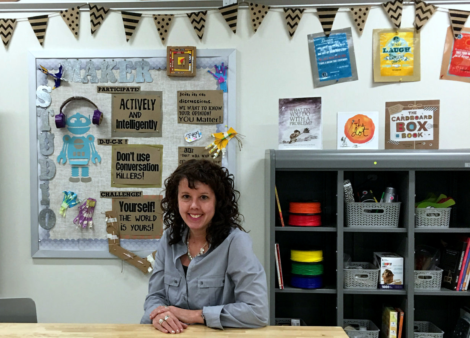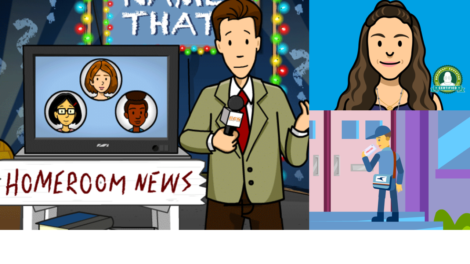
Voice and Choice with CBE of the Month Sara Hunter
Posted by cemignano on
We want to welcome October’s Certified BrainPOP Educator of the Month, Sara Hunter, to the blog! Sara joined us for a Digital Citizenship webinar at the beginning of September and we’re excited for our readers to get to know this wonderful educator. Read on to learn more about Sara’s passion for integrating technology into education and her experience as a CBE.
What grade(s) do you teach? Subject area?
I began my career as an elementary teacher, then helped develop an elementary STEM program where I was a STEM Coach for several years. Currently I serve as Curriculum Coordinator for STEM and High Ability.
How long have you been teaching?
This is my 15th year as an educator!
What inspired you to go into education?
I have always been passionate about learning but my entry point into education was actually through directing children’s theatre. I enjoyed that experience so much that I made the decision to complete a transition to teaching and a Master’s program. My Master’s action research was all about teacher collaboration for purposeful use of technology in the classroom, and that was back in 2003! It’s a profound honor and privilege to be so connected to a young person’s educational journey.
Which CBE class were you a part of? What do you like about being a CBE?
I was part of the Fall 2015 CBE class and thoroughly enjoyed the experience! Connecting with like-minded educators and having a community of support is one of the best parts of being a CBE. BrainPOP just keeps getting better and better, and I learn so much from the CBE community sharing ideas, tips, tricks and resources.
What is one of the most memorable projects you’ve done with your class using BrainPOP resources?
In my current role I facilitate a lot of professional development. One of my favorite experiences was with a group of teachers who collaborated in groups using Make-a-Map to develop group norms with examples and non-examples. Then, we added their maps as image files to a discussion in our LMS so we could have a virtual gallery walk and leave specific feedback. Make-a-Map is so versatile in how to represent your thinking with image search, keywords, custom nodes, color choices, and movie clips, it was a great experience to see how differently groups represented their thinking.
How has BrainPOP impacted a specific student (or group of students)?
BrainPOP provides multiple access points so that all students can engage and be creative with that content. I’ve seen students playing a math game with SnapThought become more articulate and adept at explaining their thinking and strategy, all through playing a fun math game! The characters in the movies are a great connection for students, (everyone loves Moby!) the choice embedded in so many of the tools give kids the opportunity to stretch to deeper thinking about concepts and that really makes a difference when using digital content.
How has becoming a CBE impacted you?
Becoming a CBE has challenged me to better understand my pedagogy around the why and how of integrating digital tools. I realized I was only skimming the surface with BrainPOP and, through the CBE course, my understanding grew of the capacity of BrainPOP and how this resource could be leveraged for student choice and voice in learning. I’ve always been a champion of purposeful use of technology integration and becoming a CBE has taken this passion to a new level.
What are you most passionate about when it comes to education, technology, and your approaches to teaching?
Learning is social and collaborative! Whether your students are 1:1 or sharing 4 classroom computers, using technology does not always have to be individual. Collaboration and dialogue are critical for literacy and language development, and student voice and choice are such an important part of becoming a life long learner. We are preparing students for their future, seek out the opportunities to develop student ownership of learning and engage them in those big problems that require perseverance and innovation.
What’s on your BrainPOP wish list?
Collaborative features like multiplayer games where students can play one another in a game and use the SnapThought feature, or co-constructing Make-a-Maps or Make-a-Movies. When we give students choice sometimes that means flexibility with time and collaborative options support students working on the same products but at different times.














